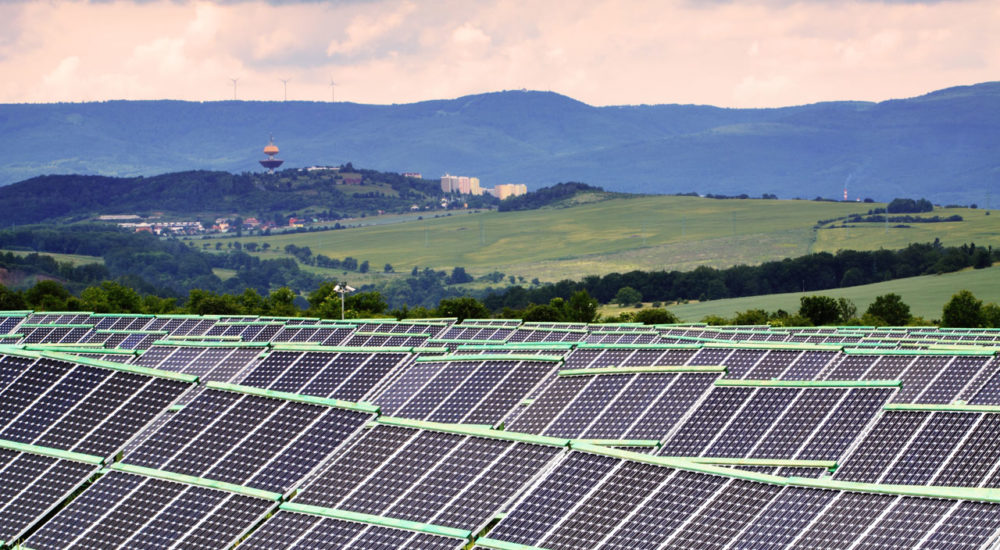Solar, Location-Variable Costs, and the 21st-Century Grid
California is pushing solar energy more aggressively than any other state in the union, and the debates unfolding there may presage controversies likely to occur in Virginia. One of those debates is the relative value of utility-scale versus community versus individual rooftop solar, which is intimately tied to the issue of location-variable costs.
Building so-called utility-scale solar — essentially vast solar farms — allows economies of scale in installation and generates electricity at the lowest cost per kilowatt. Power companies like them because they typically own the utility-scale production and get to generate a profit off them. One drawback is that utility-scale production consumes vast swaths of land. Another is that solar farms rely upon high-capacity transmission lines to move their electricity to distant locations, while local generation can feed into local distribution grids.
Utility-scale solar is going gangbusters in Virginia, but opportunities for communal and rooftop generation are limited by state law. A huge sticking point here, as it is in California, is how much utilities should reimburse small-scale producers for the electricity they generate. To what degree should small-scale producers share in the cost of maintaining the larger distribution and transmission grid they rely upon when the sun isn’t shining?
Steven Sexton, an associate professor of public policy and economics at Duke University, is skeptical of the numbers that California officials are using to justify a mandate requiring all new houses built in the state to be equipped with solar panels. In a Wall Street Journal column today, he introduces an element into the debate that I haven’t heard discussed here in the Old Dominion: grid congestion. He writes:
Regulators should tailor policy to reflect routine variation in the value of solar generation across the state’s congested electricity grid. Solar panels are most effective when installed where transmission constraints make supply relatively scarce — not on every roof in California.
In other words, the value of rooftop/community solar generation varies depending upon its location on the electric grid. The value is greater where grid congestion is worse and the alternative is spending tens of millions of dollars upgrading the transmission system — often adding to visual blight in the process. The value of rooftop/community solar is less where grid congestion is not an issue.
I would add a corollary to that observation: Rooftop/community solar generation has greater value in remote, hard-to-serve areas where new development would require the installation of additional sub-stations and distribution lines. Back in the days when I wrote about land use, I advocated the principle that all property owners should pay the location-variable costs of their decisions about where to build.
The biggest of those location-variable costs is transportation infrastructure, but a not-insignificant one is the supply of electricity. Why should city dwellers, who require less electric infrastructure per-capita, pay extra to subsidize rural dwellers? Conversely, why shouldn’t rural dwellers who generate some or all of their own electricity, receive some benefit when they avoid some of the cost of building rural electric infrastructure?
The root of the problem is that electric utilities charge a flat rate for all customers within the same class (residential, commercial and industrial) regardless of the variations in cost of serving those customers. I haven’t heard anyone in Virginia challenge that premise, but charging location-variable rates may be a necessary step for building an electric grid for the 21st century.


